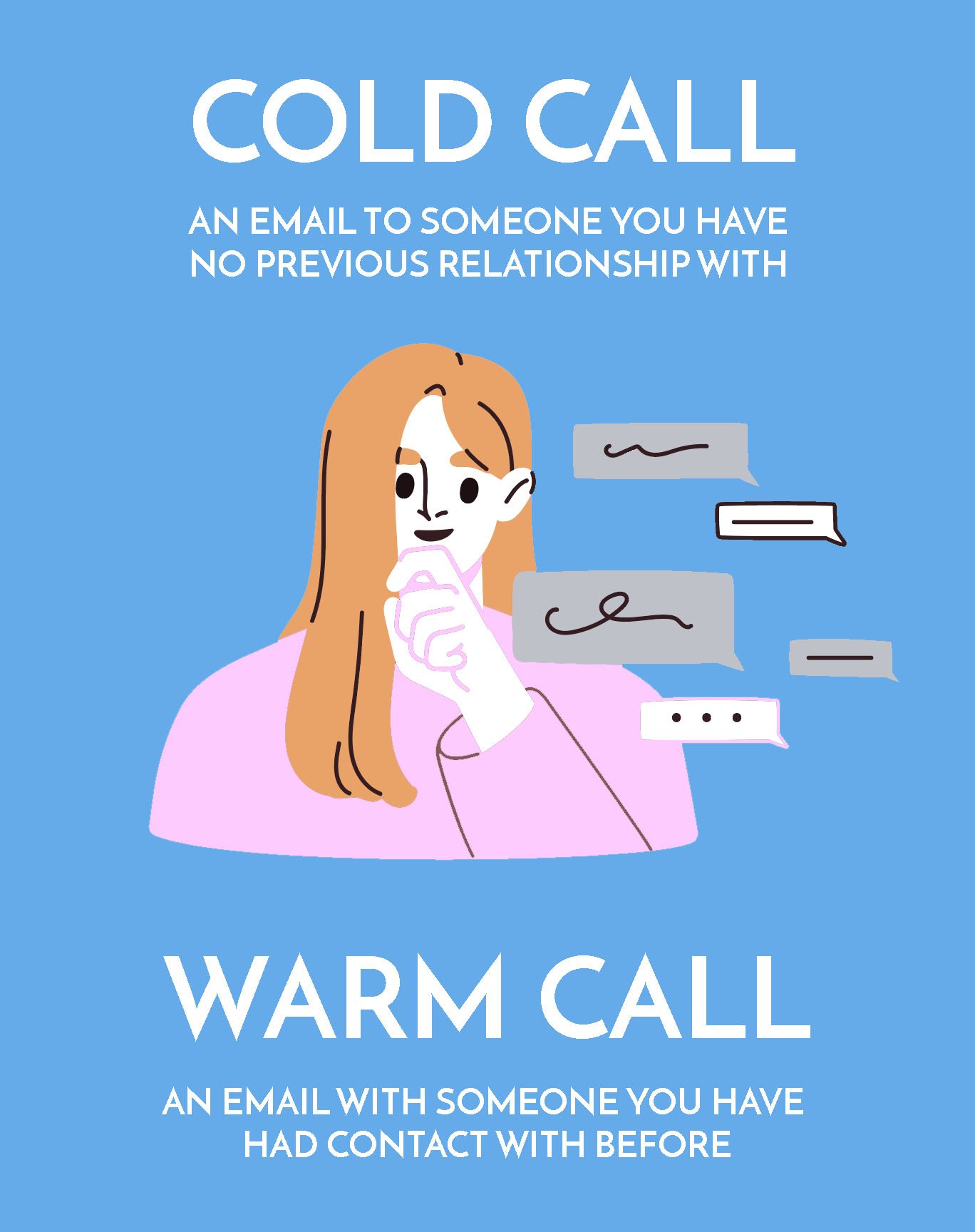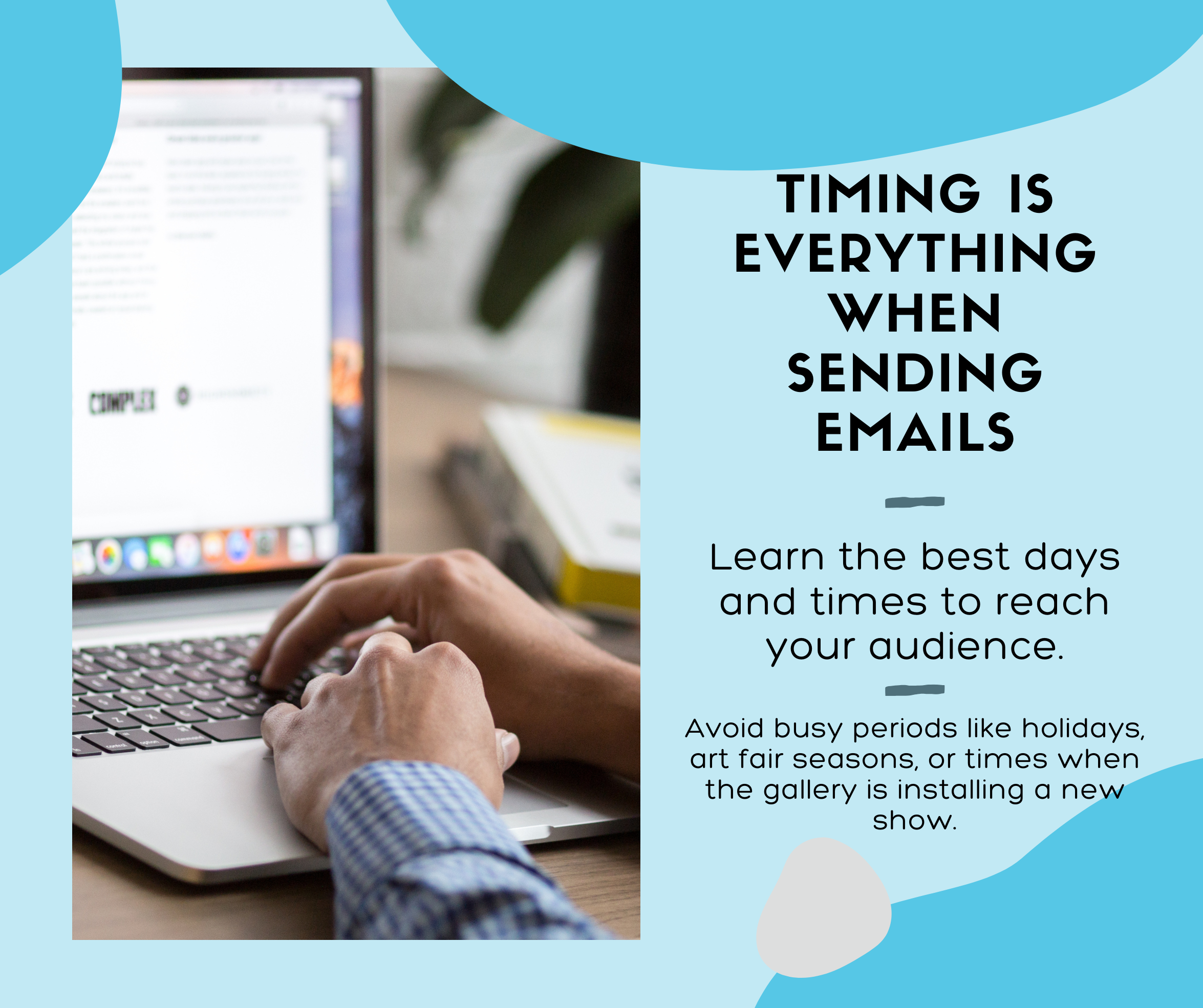GETTING A GALLERY TO SHOW YOUR ART
How To Talk To Galleries
Galleries are important to most fine artist's careers. They play a role in helping artists sell more work, give visibility by providing exhibitions, and introduce you to new collectors.
**Read our INTRO TO GALLERIES to better understand the Artist Gallery Dynamic in the contemporary art market.
But how can we connect with galleries?!?
Once you’ve found a gallery you like, there are many ways to connect. Common methods of gallery courting are: traditional in-person networking, cold calls, personal introductions from fellow artists, and even long-game networking tactics.
WHO IS IN CHARGE? Knowing A Gallery’s Business Structure
When reaching out to a gallery you need to know who to talk to and who is in charge.
Most regional galleries and art institutions have an owner/director.
For galleries, it is usually the owner/director who makes all the decisions.
If a gallery has a larger staff with multiple locations, the owner still makes decisions BUT they will also have Directors, who are often gatekeepers for exhibiting new artists.
For museum-type institutions, If they have a single curator on staff, the director is usually still involved with making curatorial decisions. If they have a larger staff, the head curator is usually the one making exhibition decisions.
Remember people shift jobs in the arts every few years. Be kind to everyone because that registrar could be a museum curator in 5 years!
METHODS FOR COURTING A GALLERY
In-Person Networking: This involves showing up to the gallery. Remember you are doing this to form connections, AND to support the gallery! Our biggest pet peeve is when an artist comes into a gallery excited to show the gallerist their work, but doesn't spend time looking at the work the gallery is showing.
Personal Introductions: Fellow artists are a great way to spark a relationship with a gallerist. these introductions leverage the principle of social proof, where trust and credibility from one relationship transfer to another. When a respected peer introduces you to a gallerist, it implicitly endorses your work, fostering an immediate sense of trust. Building your network of artist friends should be fun, do more studio visits (BETTER STUDIO VISITS) or reach out to artists you admire and start conversations.
Email Outreach: It's the digital age, and most people are on their email all the time. So for the rest of this article, we will deep dive into connecting with galleries through email.
MAKING CONTACT: Cold Call Vs Warm Call
There are two main types of emails when reaching out to galleries cold and warm emails.
Cold emails are an initial contact with someone you have no pre-existing relationship with. It's like approaching a stranger; you have no established rapport or mutual connections. Cold calls are hard for both the sender and receiver. TIP: The success of a cold email hinges on its ability to quickly establish credibility and engage the recipient's interest, usually against the backdrop of busy lives and way too many emails.
Warm emails are more like a friendly handshake. This is when you have an existing connection, however slight. It could be a gallerist you briefly met at an event, someone introduced to you by a mutual contact or a professional you've interacted with on social media. The advantage of a warm email is significant. There's an existing thread of recognition, however thin, that can be developed into a stronger bond.
Crafting An Email:
THE Main Elements:
OVERALL: Your email body should include the recipient's name, a precise subject line, an opening (usually complimenting the recipient), your ask (what you want), any relevant deadlines or timeframes, and a closing with thanks.
Subject Line: Keep it concise and directly related to the content of your message. Some good examples are: Friend of ___ , Referred by _____, Proposal Review, Virtual Visit?, Hi from ____, Personal Invite To ______, Advice? …and more.
First Paragraph: Begin with a greeting and mention any potential connection to the gallery. A compliment and some social proof is always a good idea here. Introduce yourself and explain why you are reaching out, followed by a general ask or an initiation towards a stronger connection.
Second Paragraph: Provide more background information about yourself, additional context, social proof, and possibly a link. Mention any affiliations that might be relevant to the recipient.
Tone & Language: Start with a formal tone to establish professionalism and respect. As the conversation progresses, you can adjust the tone based on the gallery’s response. Let them take the lead!
That said, even though you should focus on being respectful and professional also be authentic and human, let the email reflect your personality. Aim for warmth and friendliness, which can hopefully develop over time.
Specific Tips
Clarity and Brevity: State your purpose early in the email. Be clear and concise.
300 words MAX (200 is better). Here is an easy online word counter https://wordcounter.net/
Acknowledgment: Recognize the gallery’s work without excessive flattery.
Express Thanks: a quick “thank you for your time” can go a long way!
Formatting: Most paragraphs should be only 2-3 sentences long. Skip a line between paragraphs for readability, especially since many recipients read emails on their phones.
Attachments and Links: Links or embedded images are preferred over attachments. DO NOT use more than 2 images and generally only give one link in the body of the email. Most people will only click on one link from an email.
If you must use attachments, keep the file size under 7MB to avoid firewall issues. Most people will not open attachments for fear of viruses so it's best to direct them to your website (**Read out Website Best Practices)
What to Avoid in An Email
MOST IMPORTANT: keep the email short. Nobody has time to read your full artist statement in a cold call email. They will appreciate you getting to the point of what you want. Aim for readability.
If a gallery says “no unsolicited submissions”, don't send them a submission.
No using ALL CAPS or Excessive Emojis: It can be interpreted as shouting and emojis can humanize but also appear unprofessional.
No extra exclamation points!!! Limit the use of exclamation points to avoid appearing overly enthusiastic or informal.
No Adding to Mailing Lists Without Permission: Legally, you cannot add someone's email to your newsletter or mailing list without their explicit consent. Always ask for permission before adding anyone to your mailing list.
When to Send Emails
Timing - The timing of your email is crucial both for the sender and recipient. Consider if you’ve recently completed a new body of work that aligns with the gallery’s program.
Seasonality - Be mindful of the season. Avoid busy periods like holidays, art fair seasons, or times when the gallery is installing a new show.
Business Hours - Send your emails during business hours. Most email programs allow you to schedule your emails. Use this scheduling to give yourself time to write good emails yet ensure they are received at an optimal time.
KEEP TRACK OF YOUR HARD WORK
Keep a log of who you are contacting and when. This should include information like:
Who you are contacting
Where they work
Contact information (email, phone, instagram)
When you last contacted them
What you last contacted them about
Did they reply?
Was it a good/warm welcome?
CONCLUSION
Navigating the process of connecting with galleries seems impossible when you start, but with the right approach and mindset, it becomes an enriching part of your artistic journey.
Remember, building relationships with galleries is a long game; it demands commitment, can feel awkward at times, and often brings its share of stress. However, this journey opens doors to new opportunities and platforms for showcasing your art!
By utilizing the strategies outlined in this guide – from understanding the business structure of galleries to mastering the art of email communication – you can create meaningful connections in the art world.
Approach each interaction with professionalism, authenticity, and patience. Keep track of your efforts and learn from each experience. With time and persistence, you'll find the right gallery partnership, one that not only appreciates your art but also amplifies your voice in the world of contemporary art.






